-
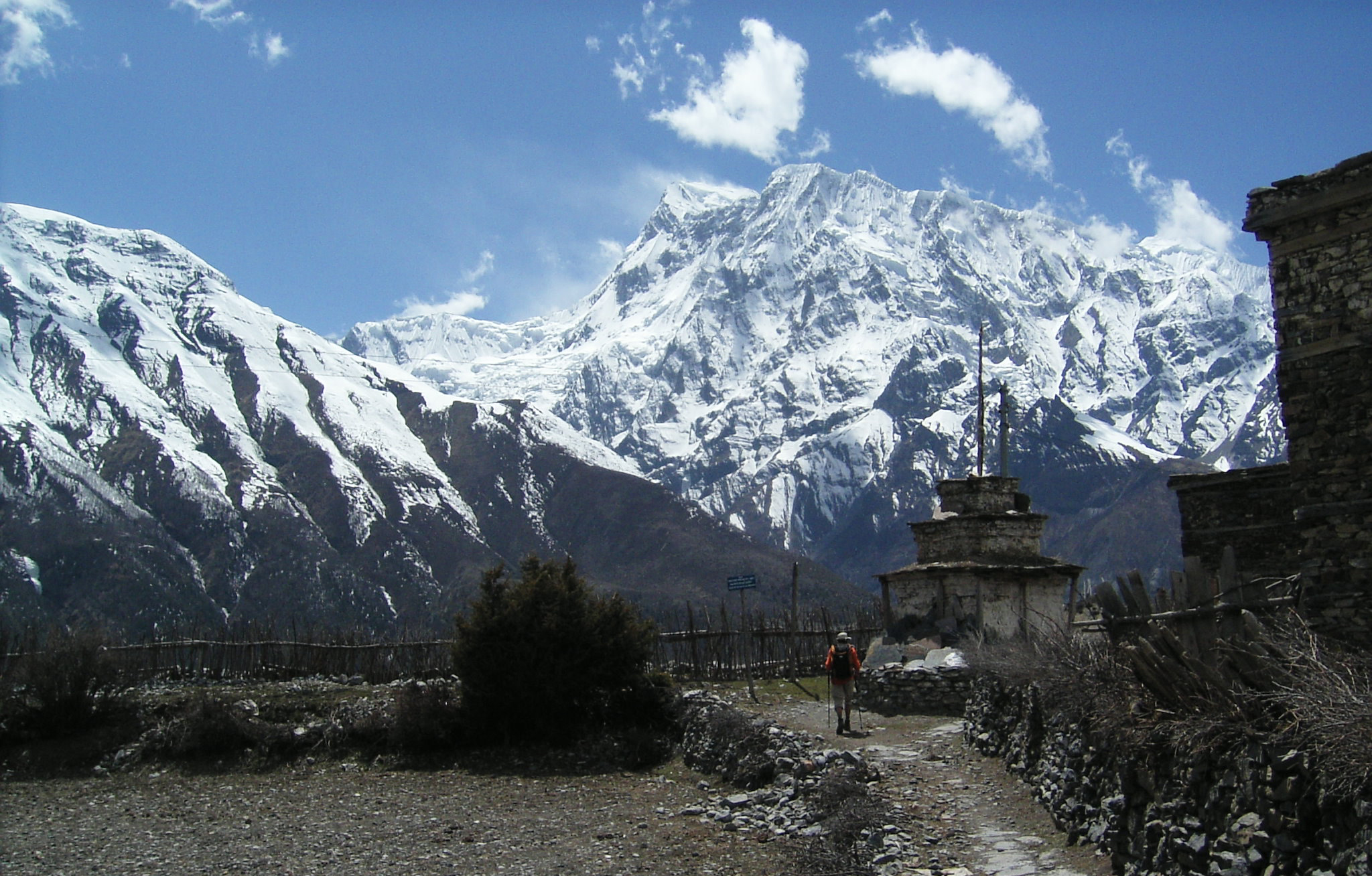
ANNAPURNA BASE CAMP TREK - 15 DAYS
This trek is the one of best views of annapurna range, nilgiri , Dhaulagiri , Tukuche peak , Dhampus peak , Hiunchuli ,Machhapuchhre , Gangapurna, Lamjung Himal other many more greatest views of mountains you never seen before.
-
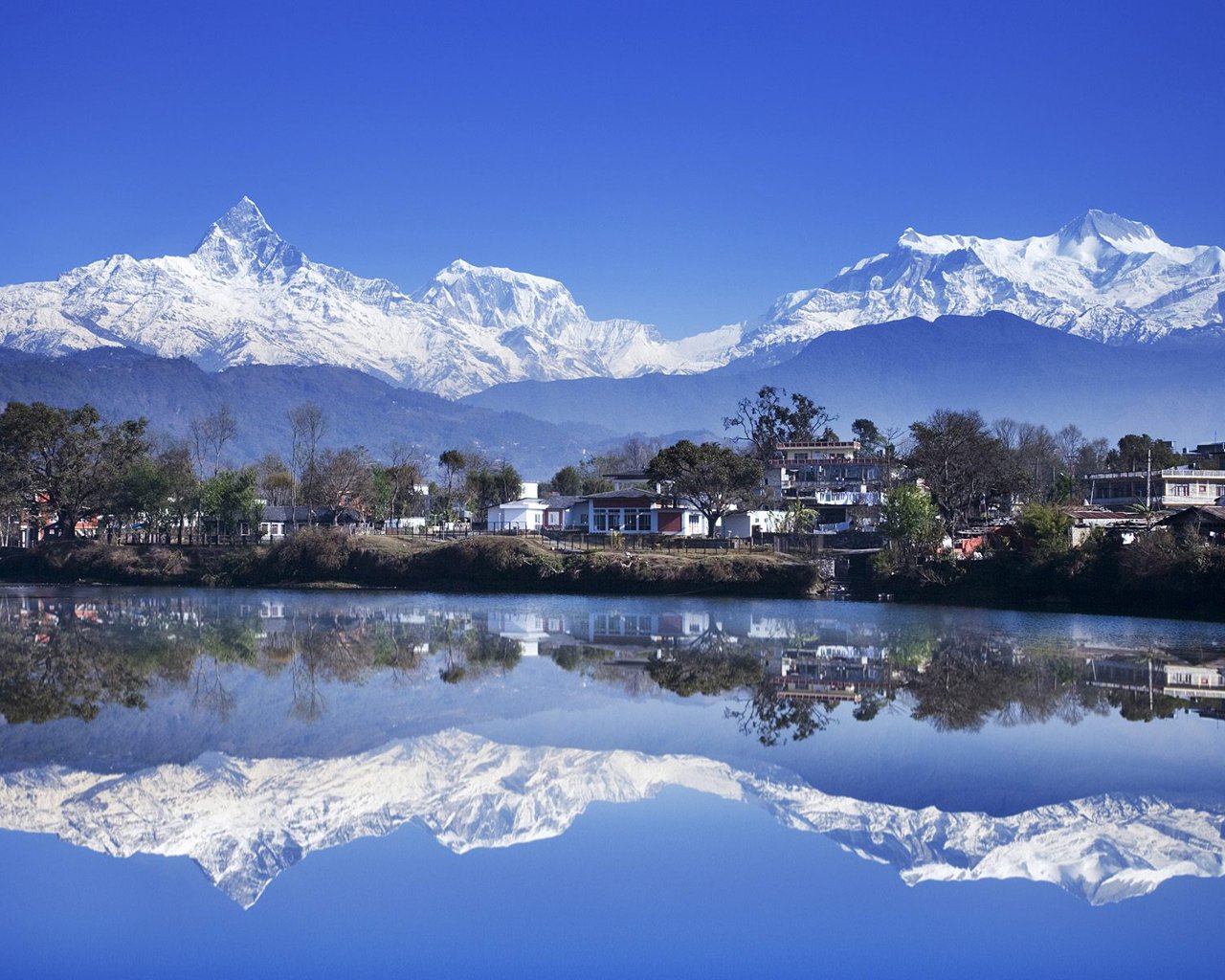
KATHMANDU-POKHARA-CHITWAN TOUR (BY FLY/LAND)- 07 NIGHTS 08 DAYS
Nepal, the land of splendid nature and rich culture is waiting for you exploration through its different facets.
-
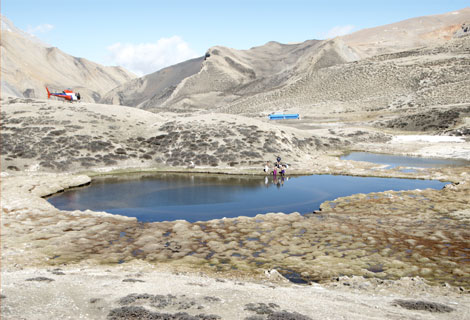
DAMODAR KUND TOUR BY HELICOPTER - 05 NIGHTS 06 DAYS
Many Hindus from round the globe are dreaming to take a holy bath at least once in their life time in the sacred Damodar-Kund
-
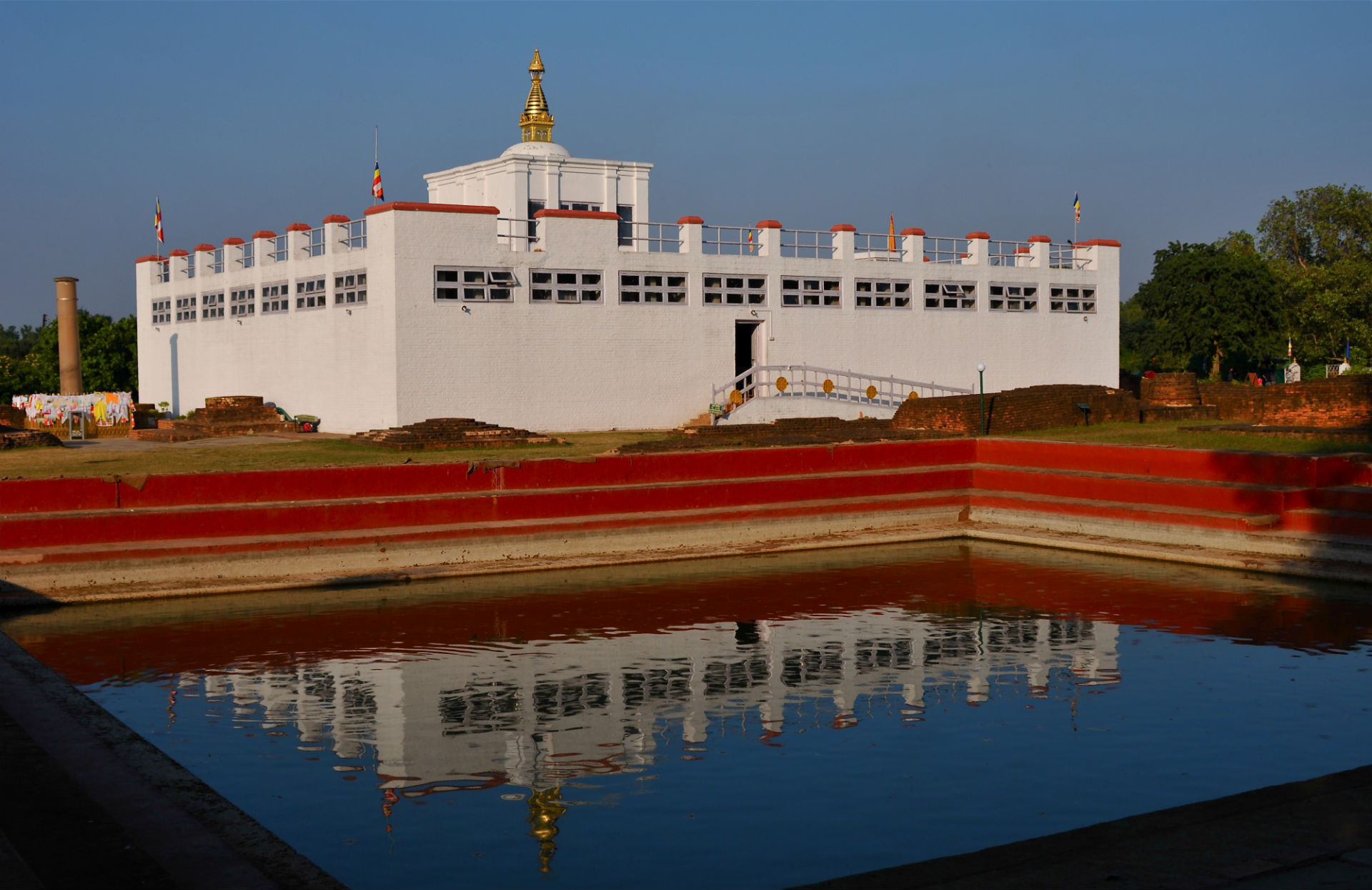
08 DAYS 07 NIGHTS NEPAL TRIP: KATHMANDU 3N, CHITWAN 2N, POKHARA 2N
Nepal, the land of splendid nature and rich culture is waiting for you exploration through its different facets.
-

EVEREST BASE CAMP TREK - 17 DAYS
Sagamartha (Everest) Base Camp trek takes us into one of the most spectacular regions of Nepal where the Sherpa culture thrives amongst the highest peaks in the world.
-
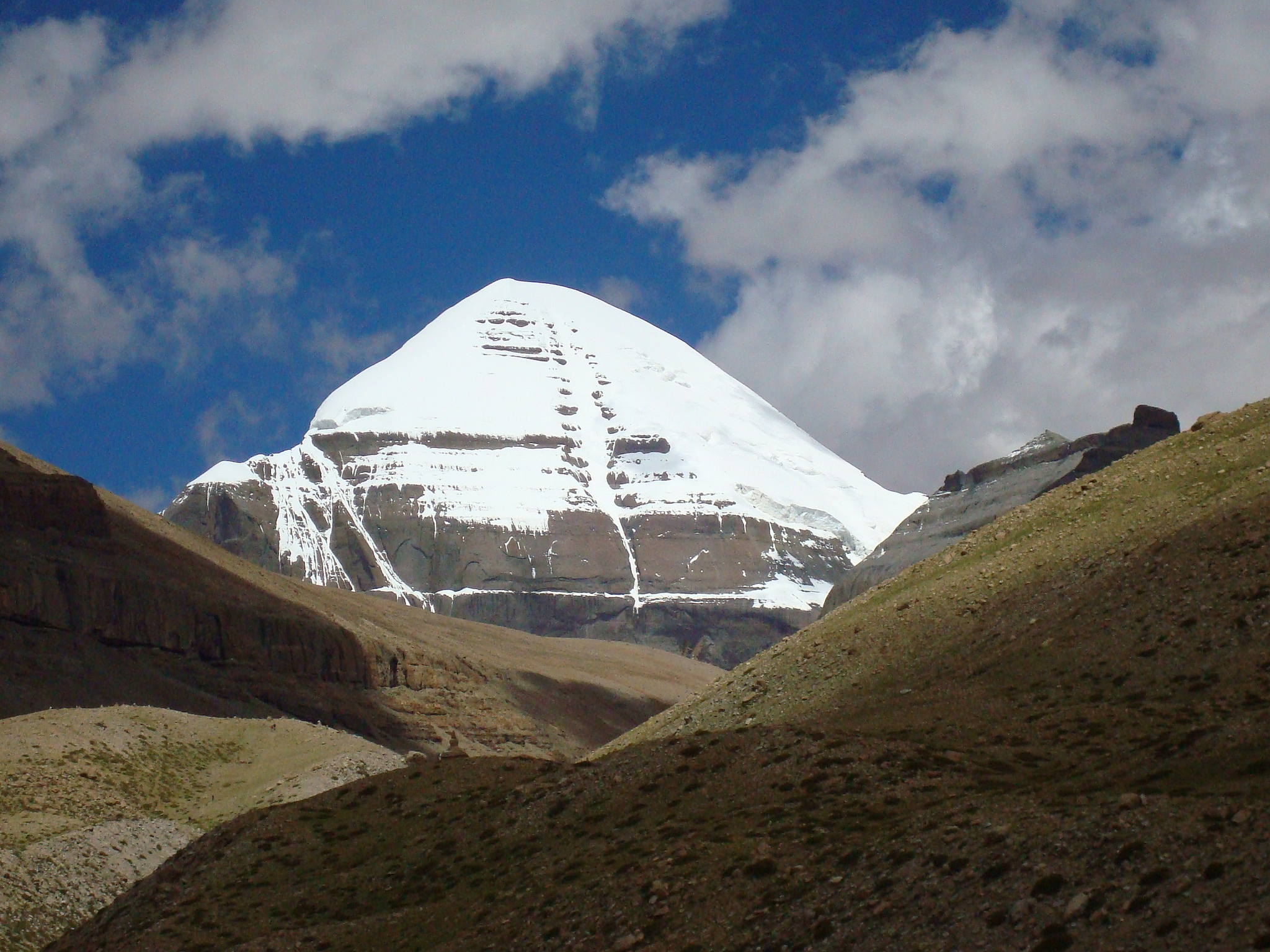
KAILASH MANSAROVAR YATRA BY OVERLAND - 14 DAYS
Mt. Kailash (6714m) is the most sacred mountain in Asia.
-
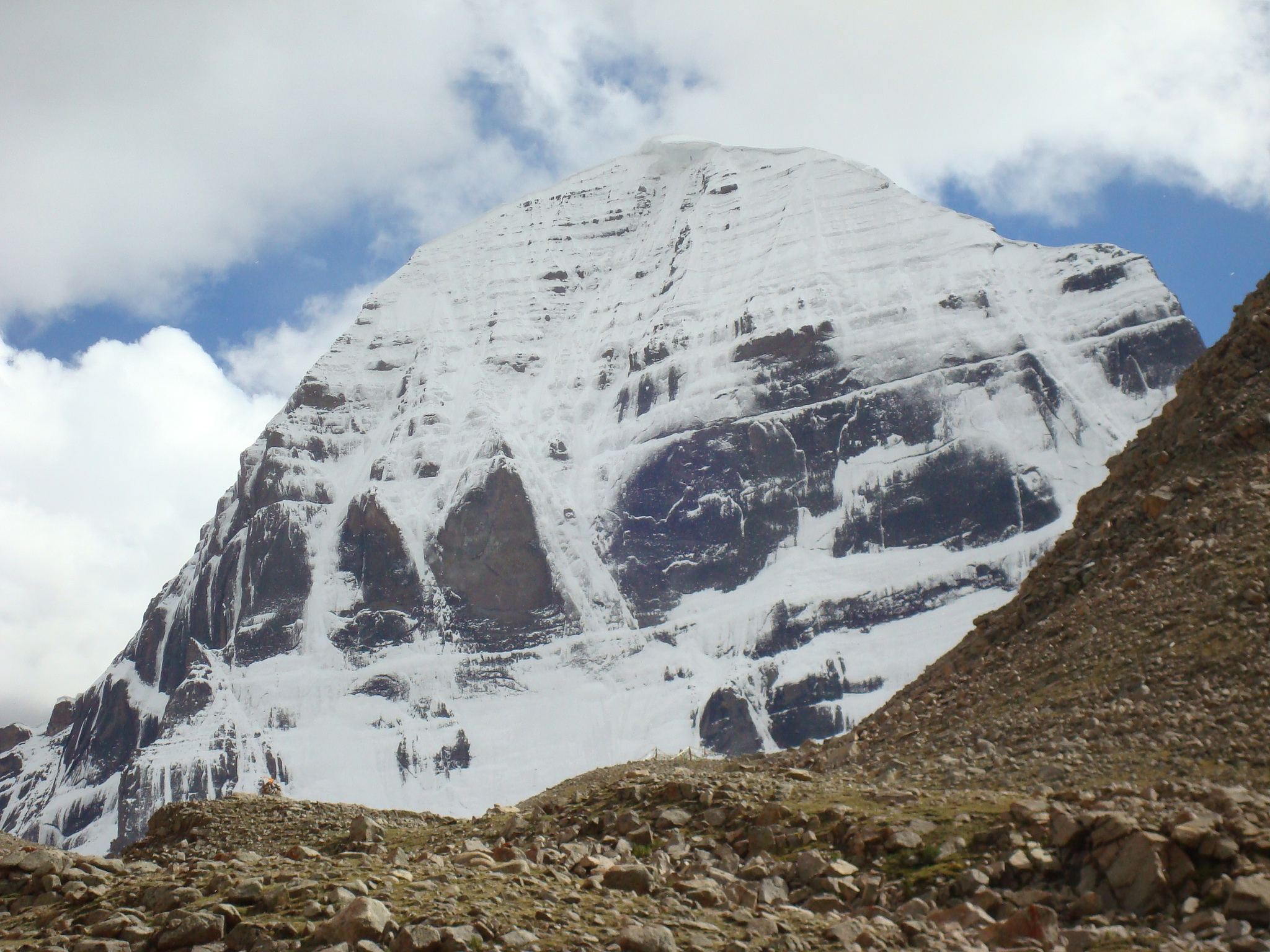
KAILASH YATRA BY HELICOPTER VIA NEPALGUNJ/SIMIKOT/HILSA/TAKLAKOT - 11 DAYS
Mt. Kailash, the sacred mountain and the abode of the Hindu god Shiva is one of the world's greatest pilgrimage destinations especially for Hindus, Buddhist, Jains and others.
-
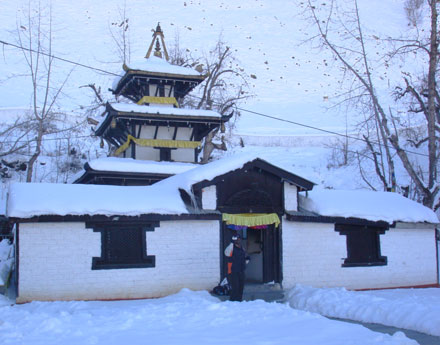
MUKTINATH TOUR BY LAND/FLIGHT
Muktinath is one of the most ancient Hindu temples of God Vishnu.
Nepal and Himalayas have been the synonym words for Nepal enjoys the pride of having 8 out of 10 highest peaks of the world! We don’t have only mountains but our unique geography has given us green hills and valleys, rivers, subtropical forests and flat lands all adding beauty to our country. Apart from geographical diversity, we have incredible cultural diversity within the boundary of our small Himalayan Kingdom . We have a number of ethnic groups, each with their own languages, cultures, and costumes, all living in perfect harmony.
 The best way to experience unbeatable combination of natural beauty and cultural riches of Nepal is to walk through terrain. One can walk along the beaten trails or virgin tracks. Either way you are in for an experience of a lifetime. Along with rhododendron forests, isolated hamlets, small mountain villages, birds, animals, temples, monasteries (Gomba) breathtaking landscape of unsurpassable mountain ranges, you will also encounter friendly people of different cultures and traditional rural life.
The best way to experience unbeatable combination of natural beauty and cultural riches of Nepal is to walk through terrain. One can walk along the beaten trails or virgin tracks. Either way you are in for an experience of a lifetime. Along with rhododendron forests, isolated hamlets, small mountain villages, birds, animals, temples, monasteries (Gomba) breathtaking landscape of unsurpassable mountain ranges, you will also encounter friendly people of different cultures and traditional rural life.
The great Mountains with unsurpassable splendor, crystal clear streams and brooks, the high current of rivers, colorful species of flowers, birds and animals, abundance of greenery and forests with much more hidden beauty and mystery with unavoidable adventure and fun will be waiting for you.
The medieval arts and architecture in the temples and palaces, monasteries and stupas are another attraction to the visitors of cultural thirst.
Many people have said about Nepal .
The country of Mount Everest, Roof top of the world, Top Eight highest mountain and 240 peaks exceeding 6094 meters, land of living Goddess, Melting pot of Hinduism and Buddhism, Country of non-stop festivals, Himalayan pilgrimage, “The wildest dreams of Kew” Nature’s amphitheatre, heat of Shangri-la, land of yak and yeti, living cultural museum of the world, anthropological treasure land, ecologists dreamland.
- As per the size the country possess one of the highest concentration and distribution of bio-diversity
- Land of the living goddess
- The country of Mount Everest
- Himalayas pilgrimage
- Land of brave Gorkhas
- Shangri-la
- Glory of Asia ‘s Past
- Ultimate Destination pf Mysticism & Exoticism.
- City of Golden Pagodas & Parasols.
- Birth place of Janaki
- Land of Eight- Thousanders
- Land of 1047 Lamas tries and Monasteries
- Country of Hidden valley and crystals Mountains
- Birth place of Apostle of Peace- Lord Buddha
- Living cultural museum of the world
- A city which has one of the largest concentration of Buddhist Icons & shrines
- Abodes of multitude of Gods and Goddess.
- Only country partciping Mahayana/Bajrayana Tantrik Buddhism.
- Anthropological Treasure Land .
- Only country still practicing Bonpo – Pre Buddhistic Spiritism.
- Country of Tharus wearing richest tribal jewellery comprising 32 items weighting seven kgs.
- The country of as many temples as many houses, as many gods and as many peoples.
- The country which has more festivals than days of the year.
- Only cherry that flowers winter.
- Some of the world’s highest village.
- 91 plants that are named after Nepal (Nepalence)
- Ecologist’ dreamland
- And a country of high Mountains consisting 240 peaks exceeding 6094 meters
- Melting pot of Hinduism & Buddhism
- country of non stop festivals
- The wildest dreams of kew.
- Nature’s Amphitheatre.
- Roof or the world
- Land of Yak & Yeti
Location
Between India & The TibetanAutonomous region of the Peoples’ of Republic China
Area
1, 47,181 Sq. Kms.
Capital
Kathmandu
National Birds
Impean Pheasant ( Danfe)
National Flowers
Rhododendron-Arboreum ( Lali Gurans)
Geography:
 Nepal, a sovereign independent kingdom, (between 80° 4′ and 88° 12′ East longitude and 26° 22′ and 30° 27′ North latitude) is bounded on the North by the Tibet Autonomous Region of the People’s Republic of China, the East-South and West by India. The length of the Kingdom is 885 kilometers east-west, and it’s breadth varies from 145-241 kilometers north-south. The country can be divided into three main geographical regions. From the world’s deepest gorge Kali-Gandaki to Highest point on earth The Mt. Everest.
Nepal, a sovereign independent kingdom, (between 80° 4′ and 88° 12′ East longitude and 26° 22′ and 30° 27′ North latitude) is bounded on the North by the Tibet Autonomous Region of the People’s Republic of China, the East-South and West by India. The length of the Kingdom is 885 kilometers east-west, and it’s breadth varies from 145-241 kilometers north-south. The country can be divided into three main geographical regions. From the world’s deepest gorge Kali-Gandaki to Highest point on earth The Mt. Everest.
(a) Himalayan Region: The altitude of this region ranges between 4877 m. – 8848 m. m. It includes 8 of the higest 14 summits in the world, which exceed altitude of 8000 meters including, Annapurna , Dhaulagiri and others.
(b) Mountain Region: This region accounts for about 64 percent of total land area. The Mahabharat range that soars up to 4877 meter and the lower Churia range form it.
(c) Terai Region: The low-land Terai occupies about 17 percent of the total land area of the country. There is no seasonal constraint on traveling in and through Nepal . Even in December and January, when the winter is at its severest, there are compensating bright sun and brilliant views.
History:
 Nepal has seen many rulers and ruling dynasties. The earliest rulers were the Kirantis who ruled from 9th century B.C. to 1st century A.D. Legends and chronicles mention that the Indian Emperor Ashoka had come to Nepal and visited Lumbini, the place where the Buddha was born, and where he erected a huge stone pillar to commemorate his visit to that spot. The Kirants were replaced by Licchavis who, according to the earliest evidences in inscriptions of the 5th century A.D. found in the courtyard of Changunarayan temple which is about 15 km north east of Kathmandu, ruled this country from 1st century to 9th century A.D. This period is noted for the many temples and fine sculptures built around the Kathmandu valley.
Nepal has seen many rulers and ruling dynasties. The earliest rulers were the Kirantis who ruled from 9th century B.C. to 1st century A.D. Legends and chronicles mention that the Indian Emperor Ashoka had come to Nepal and visited Lumbini, the place where the Buddha was born, and where he erected a huge stone pillar to commemorate his visit to that spot. The Kirants were replaced by Licchavis who, according to the earliest evidences in inscriptions of the 5th century A.D. found in the courtyard of Changunarayan temple which is about 15 km north east of Kathmandu, ruled this country from 1st century to 9th century A.D. This period is noted for the many temples and fine sculptures built around the Kathmandu valley.
The Licchavis were followed by the Thakuris, then came the Malla dynasty. The Mallas ruled focusing mainly on the Kathmandu Valley which has been the residence for most Nepali rulers from time immemorial. No other part of Nepal is as rich in cultural heritage as Kathmandu . Thanks to the exceptionally talented crafts-men, who dedicated themselves to construct the many temples and statues, we have seven world heritage sites in the Kathmandu Valley itself. In the 14th century A.D. King Jayasthiti Malla established a rigid social order. His grandson tried in every way to protect his country from suspected enemy states. Unfortunately, all his efforts were fruitless, everything went beyond his control and the country eventually divided up into 50 small feudal states including the three major ones in the valley
 Then came the Shah dynasty. King Prithvi Narayan Shah who annexed small principalities including three states in the Kathmandy Valley and unified Nepal in a single kingdom. Recognizing the threat of the British Raj in India , he dismissed European missionaries from the country and for more than a century, Nepal remained in isolation. During the mid-19th century Jung Bahadur Rana became Nepal ‘s first prime minister to wield absolute power. The Ranas were overthrown in a democracy movement of the early 1950s. In 1768 A.D. the Shah dynasty ascended the throne of the unified kingdom. His Majesty King Birendra Bir Bikram Shah Dev is eleventh King & Gyanendra Bir Bikram Shah Dev in the Shah dynasty.
Then came the Shah dynasty. King Prithvi Narayan Shah who annexed small principalities including three states in the Kathmandy Valley and unified Nepal in a single kingdom. Recognizing the threat of the British Raj in India , he dismissed European missionaries from the country and for more than a century, Nepal remained in isolation. During the mid-19th century Jung Bahadur Rana became Nepal ‘s first prime minister to wield absolute power. The Ranas were overthrown in a democracy movement of the early 1950s. In 1768 A.D. the Shah dynasty ascended the throne of the unified kingdom. His Majesty King Birendra Bir Bikram Shah Dev is eleventh King & Gyanendra Bir Bikram Shah Dev in the Shah dynasty.
The new democratic constitution of the kingdom was promulgated on November 9, 1990 . Nepal is one of the founder members of South Asian Association for Regional Cooperation SAARC of which the third summit was held in Kathmandu in Nov. 1987.
Today, Nepal enjoys a multiparty democratic system
People:
 Nepal has a population of more than 22 million people made of different races living in different regions, 40% with diverse culture, and 70%. Languages and dialects .The Gurungs and Magars live mainly in the west. The Rais, Limbus and Sunuwars inhabit the slopes and valleys of the eastern mid hills. The Sherpas live in the Himalayan region. The Newars constitute an important ethnic group of the capital valley Kathmandu . There are Tharus, Yadavas, Satar, Rajvanshis and Dhimals in the Terai region. The Brahmans, Chhetris and Thakuris are spread generally over most parts of the kingdom.
Nepal has a population of more than 22 million people made of different races living in different regions, 40% with diverse culture, and 70%. Languages and dialects .The Gurungs and Magars live mainly in the west. The Rais, Limbus and Sunuwars inhabit the slopes and valleys of the eastern mid hills. The Sherpas live in the Himalayan region. The Newars constitute an important ethnic group of the capital valley Kathmandu . There are Tharus, Yadavas, Satar, Rajvanshis and Dhimals in the Terai region. The Brahmans, Chhetris and Thakuris are spread generally over most parts of the kingdom.
Religion and Culture:
 Hinduism and Buddhism constitute two major religions of Nepal . A remarkable feature of Nepal is the religious homogeneity that exists, particularly between the Hindu and Buddhist communities. Apart from the Hindus and Buddhists, Muslim from the third largest religious group. The exquisite medieval Art & Architecture of the Kathmandu Valley vividly reflect the artistic ingenuity and the religious tradition of the people.
Hinduism and Buddhism constitute two major religions of Nepal . A remarkable feature of Nepal is the religious homogeneity that exists, particularly between the Hindu and Buddhist communities. Apart from the Hindus and Buddhists, Muslim from the third largest religious group. The exquisite medieval Art & Architecture of the Kathmandu Valley vividly reflect the artistic ingenuity and the religious tradition of the people.
The Caste System :
The caste system is still intact today but the rules are not as rigid as they were in the past. Because of western education, contact with foreigners, media, and modern communications, people are progressive in many aspects. In 1962, a law was passed making it illegal to discriminate against the untouchable castes. Hence all castes are equally treated by the law. Education is free and open to all castes
Language:
Nepali, like Hindi, is written in the Dev-nagari script. It is Nepal ‘s national language, apart from being the lingua franca of the country’s divergent communities that speak mutually unintelligible language and dialects. English is also widely spoken and understood in urban areas. In Tourism sector people speaks English, Japanese, French, Spanish, Italian, Chinese and other foreign languages.
Vegetation and Wildlife
 Nepal possesses some of the most outstanding bio-diversity in the world, ranging from sub-tropical Rain forests to Alpine deserts. There are more than 6000 flowering plant species in Nepal . There are several native plants which are originated in Nepal . Himalayan Rhododendron is the most famous one.
Nepal possesses some of the most outstanding bio-diversity in the world, ranging from sub-tropical Rain forests to Alpine deserts. There are more than 6000 flowering plant species in Nepal . There are several native plants which are originated in Nepal . Himalayan Rhododendron is the most famous one.
Wildlife: Nepal has 30 species of large wild animals and approximately 180 species of mammal’s .The one horned rhinoceros, Royal Bengal tiger, crocodile, snow leopard, red panda, Himalayan black bear, and many other wild animals are found in the forests of Nepal . Nepal has 840 different species of wet-land, migratory and residential birds

Climate:
Nepal has four climatic seasons (a) Spring: March-May, (b) Summer: June-August (c) Autumn: September-November and (d) Winter: December-February. The average temperature and rainfall records in kathmandu are presented hereunder….. For more information of Climate chart













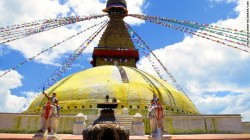
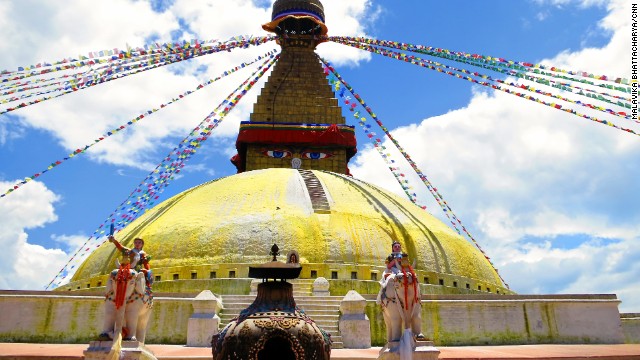


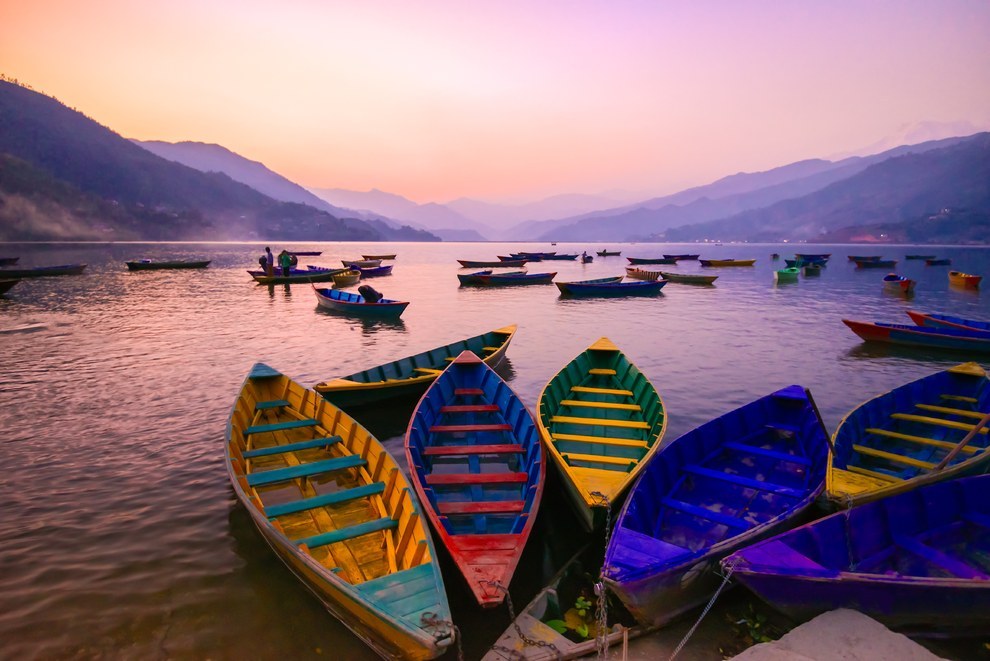
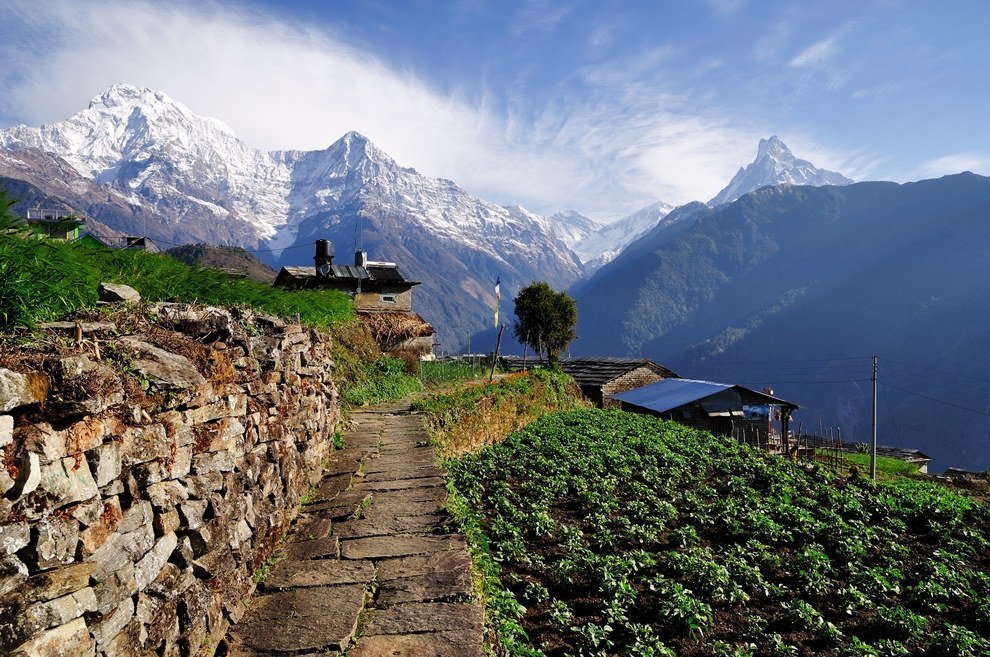
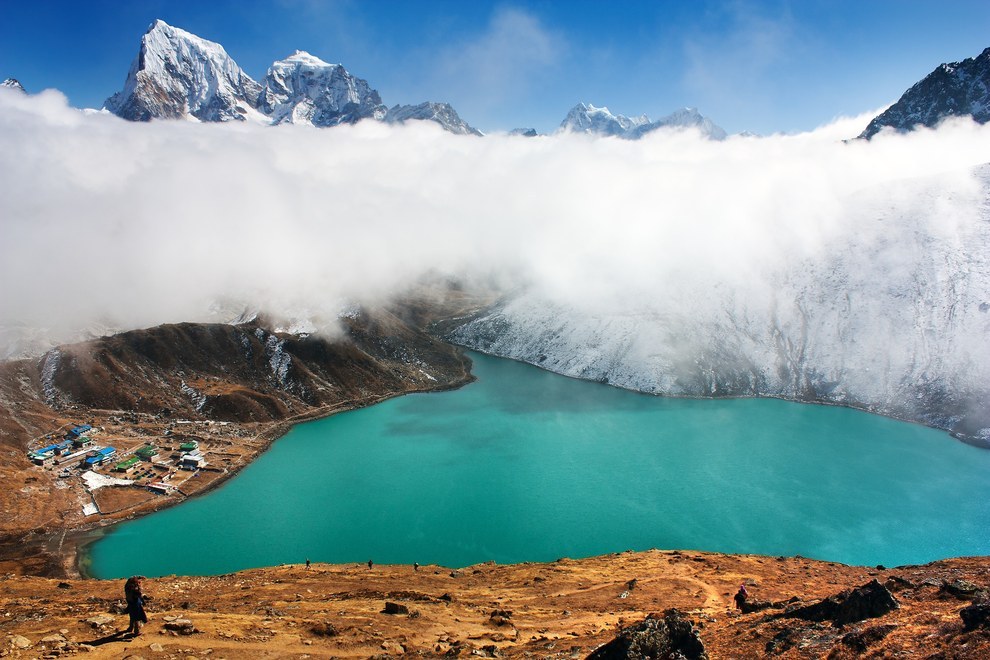

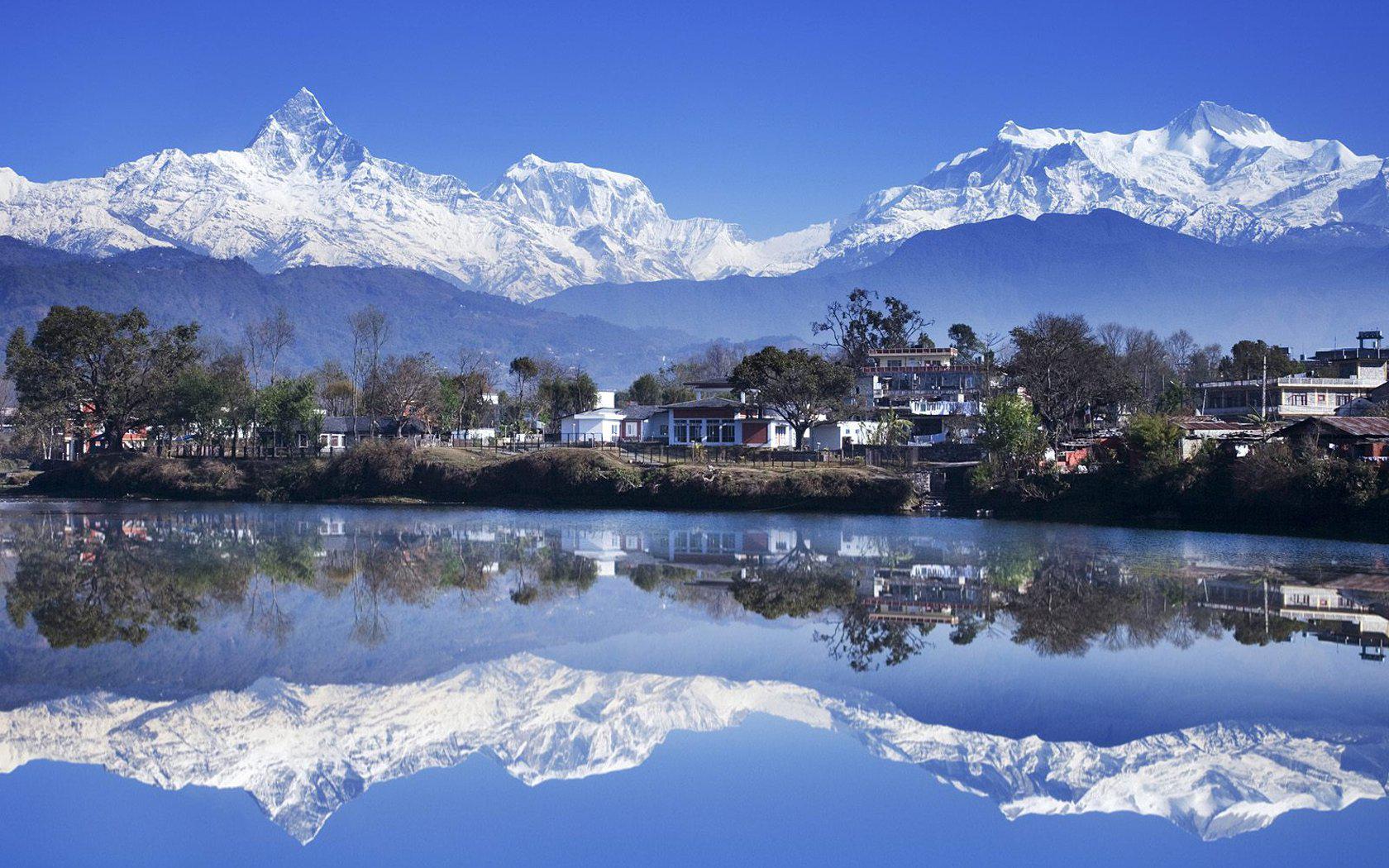

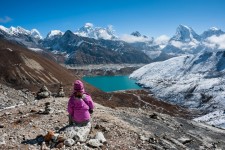
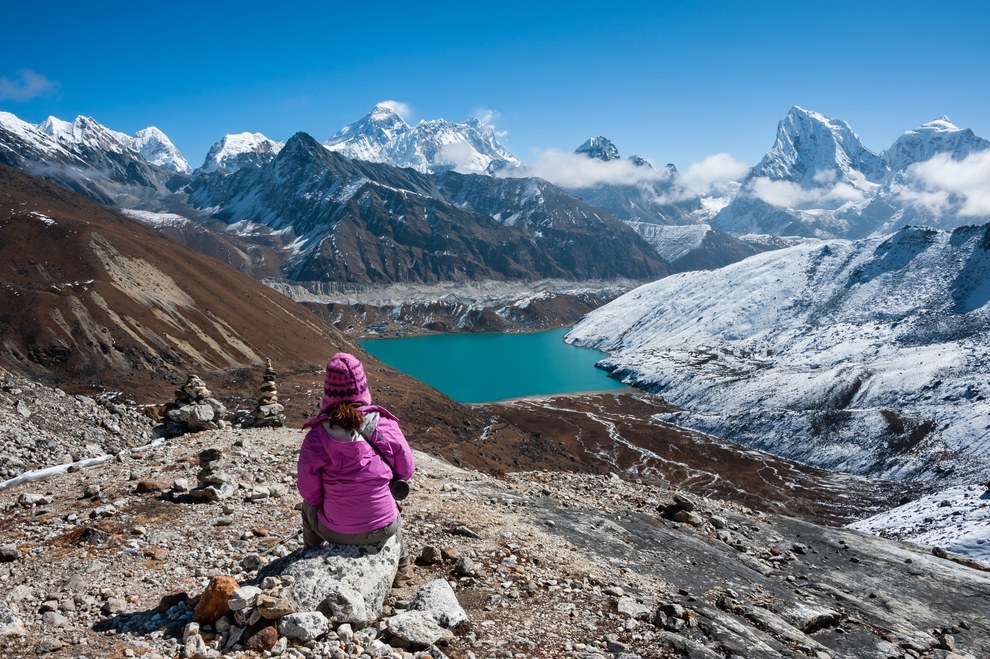
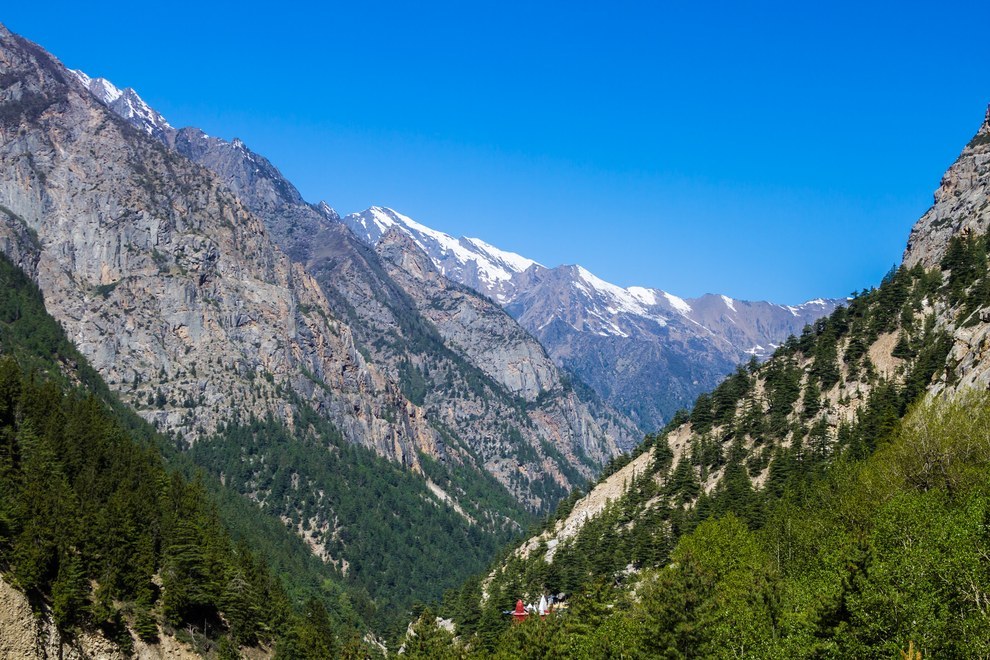
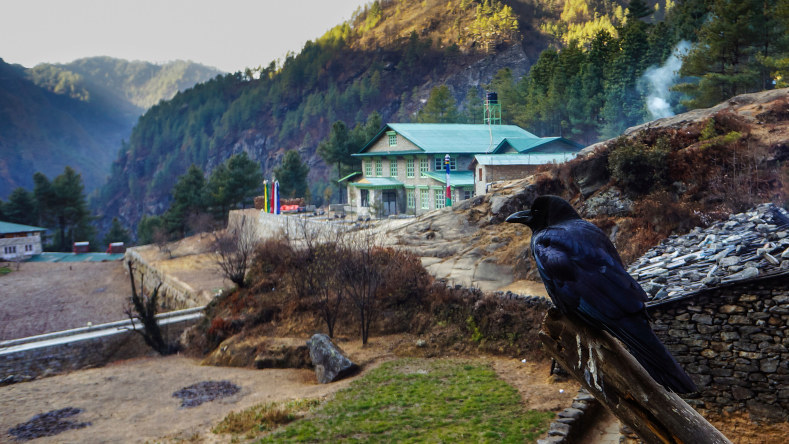
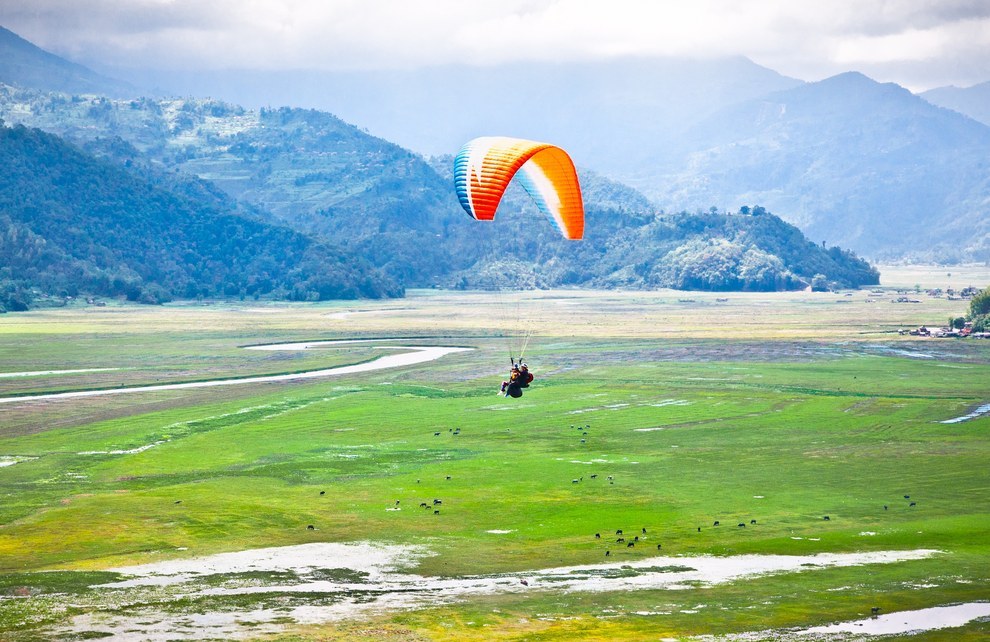
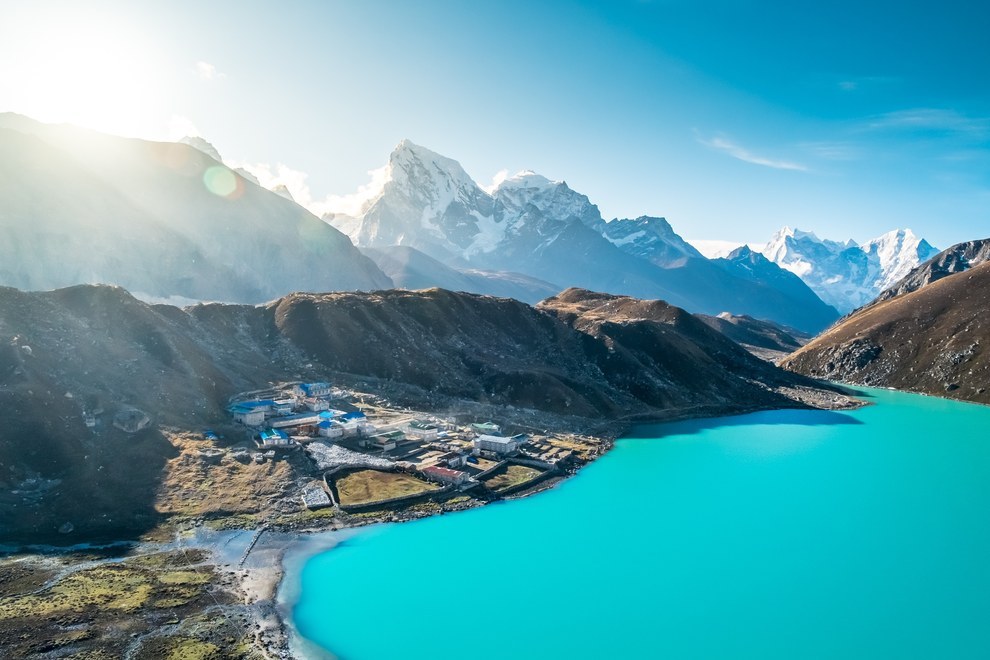

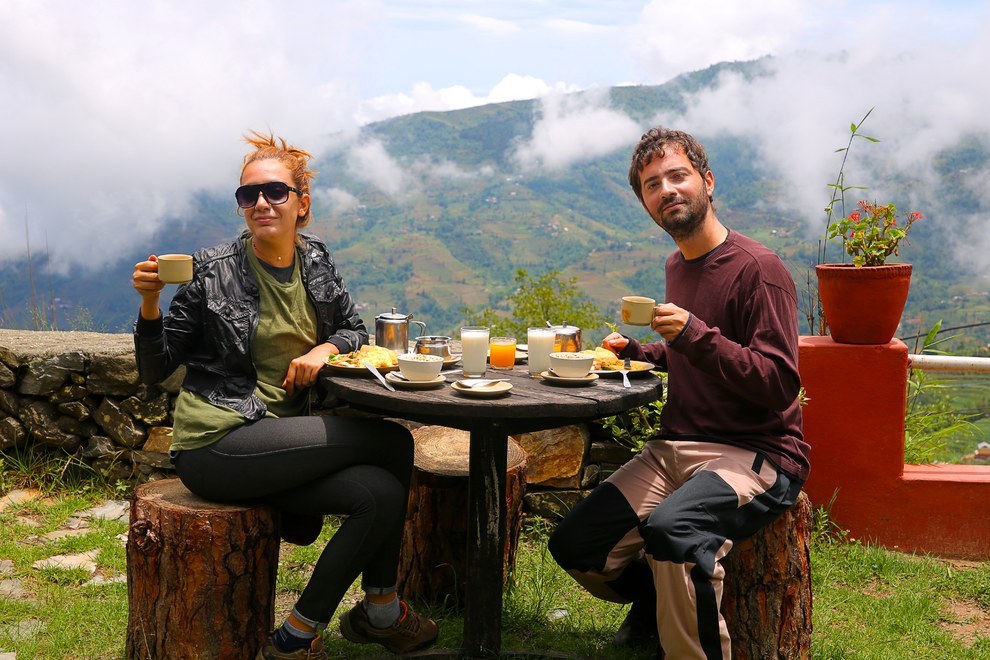
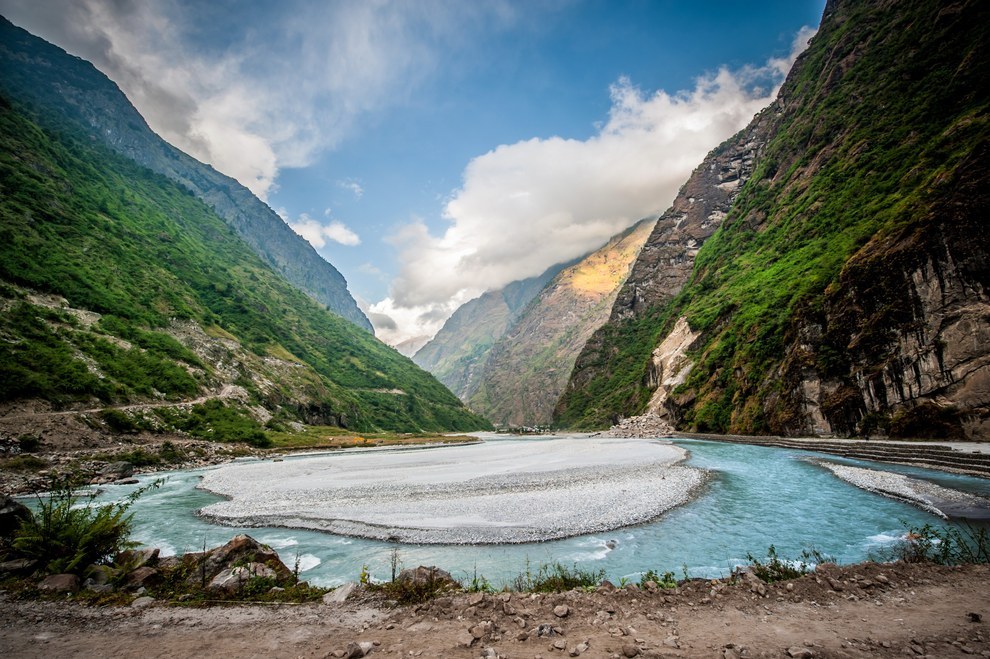
 The best way to experience unbeatable combination of natural beauty and cultural riches of Nepal is to walk through terrain. One can walk along the beaten trails or virgin tracks. Either way you are in for an experience of a lifetime. Along with rhododendron forests, isolated hamlets, small mountain villages, birds, animals, temples, monasteries (Gomba) breathtaking landscape of unsurpassable mountain ranges, you will also encounter friendly people of different cultures and traditional rural life.
The best way to experience unbeatable combination of natural beauty and cultural riches of Nepal is to walk through terrain. One can walk along the beaten trails or virgin tracks. Either way you are in for an experience of a lifetime. Along with rhododendron forests, isolated hamlets, small mountain villages, birds, animals, temples, monasteries (Gomba) breathtaking landscape of unsurpassable mountain ranges, you will also encounter friendly people of different cultures and traditional rural life. Nepal, a sovereign independent kingdom, (between 80° 4′ and 88° 12′ East longitude and 26° 22′ and 30° 27′ North latitude) is bounded on the North by the Tibet Autonomous Region of the People’s Republic of China, the East-South and West by India. The length of the Kingdom is 885 kilometers east-west, and it’s breadth varies from 145-241 kilometers north-south. The country can be divided into three main geographical regions. From the world’s deepest gorge Kali-Gandaki to Highest point on earth The Mt. Everest.
Nepal, a sovereign independent kingdom, (between 80° 4′ and 88° 12′ East longitude and 26° 22′ and 30° 27′ North latitude) is bounded on the North by the Tibet Autonomous Region of the People’s Republic of China, the East-South and West by India. The length of the Kingdom is 885 kilometers east-west, and it’s breadth varies from 145-241 kilometers north-south. The country can be divided into three main geographical regions. From the world’s deepest gorge Kali-Gandaki to Highest point on earth The Mt. Everest. Nepal has seen many rulers and ruling dynasties. The earliest rulers were the Kirantis who ruled from 9th century B.C. to 1st century A.D. Legends and chronicles mention that the Indian Emperor Ashoka had come to Nepal and visited Lumbini, the place where the Buddha was born, and where he erected a huge stone pillar to commemorate his visit to that spot. The Kirants were replaced by Licchavis who, according to the earliest evidences in inscriptions of the 5th century A.D. found in the courtyard of Changunarayan temple which is about 15 km north east of Kathmandu, ruled this country from 1st century to 9th century A.D. This period is noted for the many temples and fine sculptures built around the Kathmandu valley.
Nepal has seen many rulers and ruling dynasties. The earliest rulers were the Kirantis who ruled from 9th century B.C. to 1st century A.D. Legends and chronicles mention that the Indian Emperor Ashoka had come to Nepal and visited Lumbini, the place where the Buddha was born, and where he erected a huge stone pillar to commemorate his visit to that spot. The Kirants were replaced by Licchavis who, according to the earliest evidences in inscriptions of the 5th century A.D. found in the courtyard of Changunarayan temple which is about 15 km north east of Kathmandu, ruled this country from 1st century to 9th century A.D. This period is noted for the many temples and fine sculptures built around the Kathmandu valley. Then came the Shah dynasty. King Prithvi Narayan Shah who annexed small principalities including three states in the Kathmandy Valley and unified Nepal in a single kingdom. Recognizing the threat of the British Raj in India , he dismissed European missionaries from the country and for more than a century, Nepal remained in isolation. During the mid-19th century Jung Bahadur Rana became Nepal ‘s first prime minister to wield absolute power. The Ranas were overthrown in a democracy movement of the early 1950s. In 1768 A.D. the Shah dynasty ascended the throne of the unified kingdom. His Majesty King Birendra Bir Bikram Shah Dev is eleventh King & Gyanendra Bir Bikram Shah Dev in the Shah dynasty.
Then came the Shah dynasty. King Prithvi Narayan Shah who annexed small principalities including three states in the Kathmandy Valley and unified Nepal in a single kingdom. Recognizing the threat of the British Raj in India , he dismissed European missionaries from the country and for more than a century, Nepal remained in isolation. During the mid-19th century Jung Bahadur Rana became Nepal ‘s first prime minister to wield absolute power. The Ranas were overthrown in a democracy movement of the early 1950s. In 1768 A.D. the Shah dynasty ascended the throne of the unified kingdom. His Majesty King Birendra Bir Bikram Shah Dev is eleventh King & Gyanendra Bir Bikram Shah Dev in the Shah dynasty. Nepal has a population of more than 22 million people made of different races living in different regions, 40% with diverse culture, and 70%. Languages and dialects .The Gurungs and Magars live mainly in the west. The Rais, Limbus and Sunuwars inhabit the slopes and valleys of the eastern mid hills. The Sherpas live in the Himalayan region. The Newars constitute an important ethnic group of the capital valley Kathmandu . There are Tharus, Yadavas, Satar, Rajvanshis and Dhimals in the Terai region. The Brahmans, Chhetris and Thakuris are spread generally over most parts of the kingdom.
Nepal has a population of more than 22 million people made of different races living in different regions, 40% with diverse culture, and 70%. Languages and dialects .The Gurungs and Magars live mainly in the west. The Rais, Limbus and Sunuwars inhabit the slopes and valleys of the eastern mid hills. The Sherpas live in the Himalayan region. The Newars constitute an important ethnic group of the capital valley Kathmandu . There are Tharus, Yadavas, Satar, Rajvanshis and Dhimals in the Terai region. The Brahmans, Chhetris and Thakuris are spread generally over most parts of the kingdom. Hinduism and Buddhism constitute two major religions of Nepal . A remarkable feature of Nepal is the religious homogeneity that exists, particularly between the Hindu and Buddhist communities. Apart from the Hindus and Buddhists, Muslim from the third largest religious group. The exquisite medieval Art & Architecture of the Kathmandu Valley vividly reflect the artistic ingenuity and the religious tradition of the people.
Hinduism and Buddhism constitute two major religions of Nepal . A remarkable feature of Nepal is the religious homogeneity that exists, particularly between the Hindu and Buddhist communities. Apart from the Hindus and Buddhists, Muslim from the third largest religious group. The exquisite medieval Art & Architecture of the Kathmandu Valley vividly reflect the artistic ingenuity and the religious tradition of the people. Nepal possesses some of the most outstanding bio-diversity in the world, ranging from sub-tropical Rain forests to Alpine deserts. There are more than 6000 flowering plant species in Nepal . There are several native plants which are originated in Nepal . Himalayan Rhododendron is the most famous one.
Nepal possesses some of the most outstanding bio-diversity in the world, ranging from sub-tropical Rain forests to Alpine deserts. There are more than 6000 flowering plant species in Nepal . There are several native plants which are originated in Nepal . Himalayan Rhododendron is the most famous one.